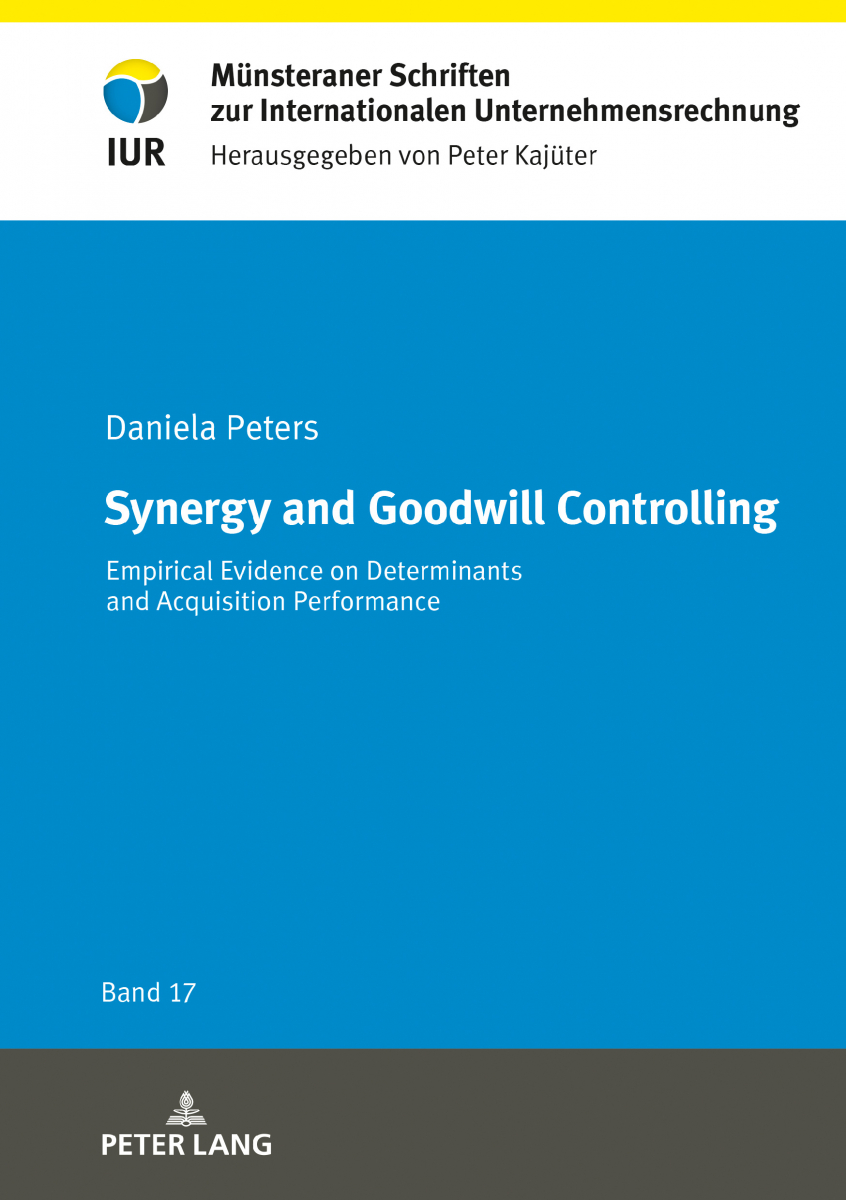Band 17
Daniela Peters – Synergy and Goodwill Controlling - Empirical Evidence on Determinants and Acquisition Performance

For decades and until today, mergers and acquisitions are a widely used strategy for the rapid growth of companies. Various empirical studies, however, have shown that more than 50 percent of all acquisitions were not successful, as they destroyed shareholder value. Considering this contradiction, this study raises the questions why companies despite high risks of failure still perform acquisitions and whether characteristics can be identified to differentiate successful from unsuccessful acquirer companies.
Based on conceptual considerations from an accounting perspective, the study derives synergies and goodwill as value-based success factors. Paid synergies determine the hurdle for acquisition success, as value creation begins with the realization of unpaid synergies, because realizing paid synergies only leads to value conservation for acquirer companies. The study illustrates that synergies and goodwill are two sides of the same coin, as paid synergies result in goodwill, which bears the inevitable risk of an impairment that would compromise the success of an acquisition.
Against this background, the present study analyzes to what extent synergy and goodwill controlling – particularly planning, control, and information tasks regarding incurred synergies and goodwill – affect acquisition success. For this purpose, the study combines survey, archival, and event study data. A descriptive analysis examines in which form synergy and goodwill controlling are implemented in German, Austrian, and Swiss corporate practice. Additionally, explanatory analyses identify several acquirer, business combination, and transaction characteristics that determine the application of synergy and goodwill controlling. They further reveal that synergy and goodwill controlling influence internal and external measures of acquisition success in different ways.
Thus, synergies and goodwill should be moved into the spotlight of prospective research projects or when acquirer companies plan their next acquisitions. Besides for research or acquirer companies, the study’s findings also have implications for the management or controlling departments of acquirers, their share- and stakeholders, other investors, and standard setters.


